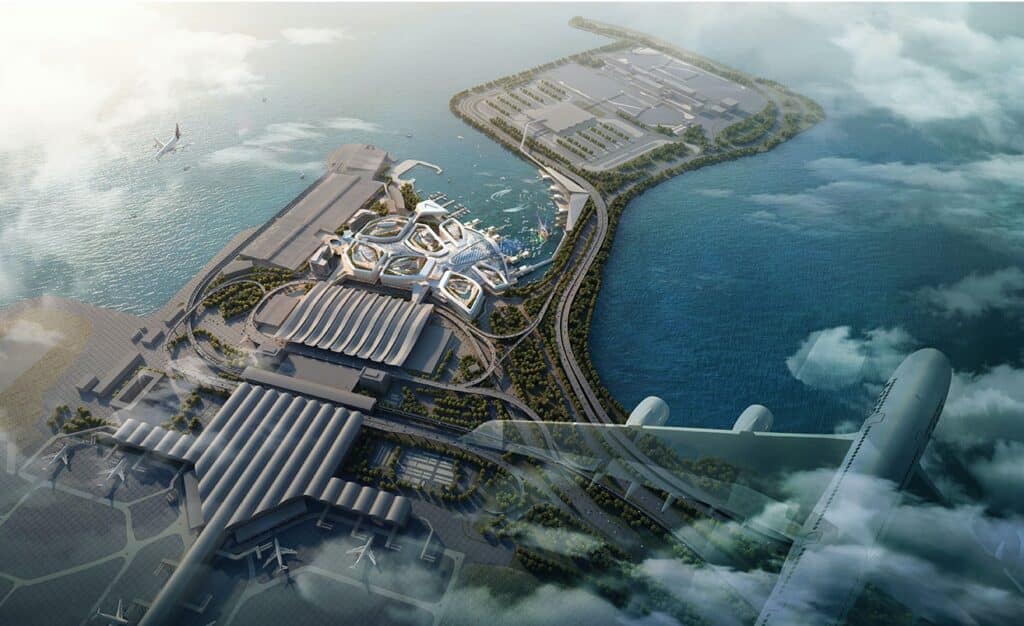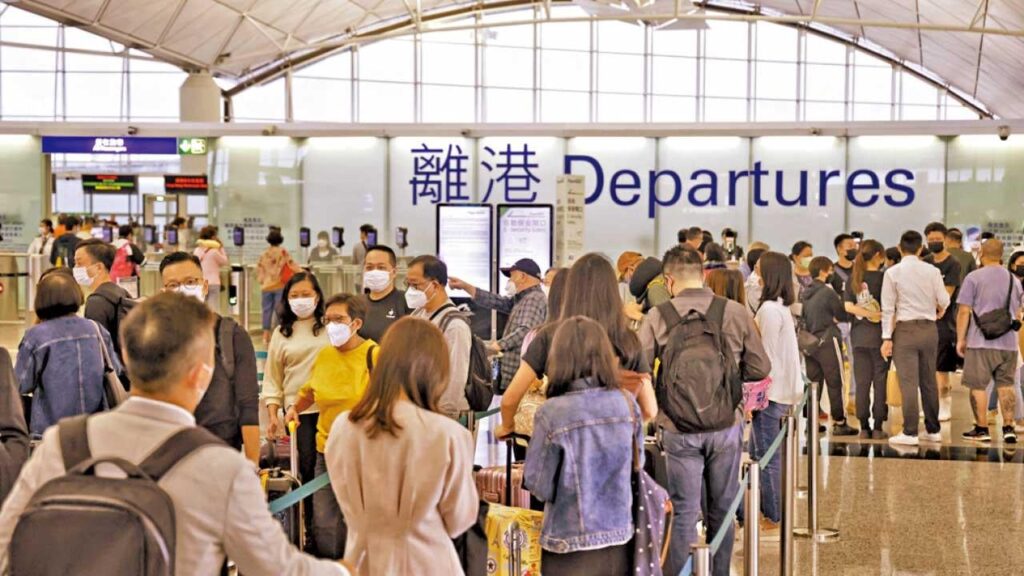The COVID-19 epidemic is raging and Hong Kong is facing unprecedented difficulties. The economy contracted by 6.1% in 2020, the largest decline on record. The unemployment rate is 5.9%, which is also a historical high. Tourism, construction and other consumer industries are the hardest hit areas. Overall trade rebounded sharply after a sharp decline in the first half of the year, mainly benefiting from the growth in exports to the mainland, but still recorded a slight decline throughout the year. As for trade in services, tourism and transportation came to a standstill, and only cross-border financial and fund-raising activities were active, leading to a slight increase in financial services. With the promulgation and implementation of the National Security Law in Hong Kong, society has gradually stabilized, but the road to economic recovery is still long.
The recurring and severe epidemic has caused Hong Kong's Legislative Council election originally scheduled for 2020 to be postponed for one year. Hong Kong's prevention and control measures are aimed at "preventing imported cases from outside and preventing resurgence at home". During this period, the central government sent a medical team to Hong Kong to provide more than 1.7 million citizens with "will-to-test" community testing, which was also reserved for Hong Kong. Vaccine, ensuring adequate supply. Faced with the impact on the economy and people's livelihood, the SAR government launched the "Anti-epidemic Fund" to provide more than HK$300 billion in relief measures to citizens and various industries, including an "Employment Protection" plan to protect employees from being laid off.
Spatial planning helps urban transformation
At the same time, Hong Kong continues to invest in infrastructure to maintain its competitiveness. The Hong Kong Airport Authority will invest in Zhuhai Airport and combine the mainland aviation network of Zhuhai Airport with the international network of Hong Kong International Airport to enhance synergy and build a world-class airport cluster with international competitiveness. With the opening of the Hong Kong-Zhuhai-Macao Bridge, the traffic time between the three places has been greatly reduced. The Hong Kong Port Artificial Island has planned to develop an automated parking lot for "land-to-air" passengers to go directly to the gate of Hong Kong Airport to board flights to overseas flights. The AA also announced the development of the "Space Corridor" project, which will use an unmanned transport system to connect the Hong Kong-Zhuhai-Macao Bridge, the future Space City and the Tung Chung New Town, making good use of the land adjacent to the airport.
This year, the government proposed the "Vibrant Hong Kong Island South" plan to strengthen external links with the MTR South Island Line (Eastern Section) and build the Southern District into a leisure and entertainment area integrating tourism, history, culture and life. Ocean Park has repositioned itself from a theme park to a conservation and education resort. It is divided into a free-entry dining, retail and leisure area and a core theme area that charges based on attractions. The owner of Jumbo Seafood Restaurant even donated the seafood restaurant to Ocean Park free of charge, and revitalized it in the Aberdeen Typhoon Shelter on a non-profit basis, turning it into a unique historical, cultural and tourist attraction in the Southern District.
regional cooperationInject new impetus
In order to facilitate Hong Kong and Macao residents to work, live and study in mainland cities in the Greater Bay Area, tax, house purchase, professional certification and other measures have been implemented. Currently, Hong Kong vehicles entering Guangdong Province need to apply for a quota license commonly known as the "China-Hong Kong license plate". This year's "Hong Kong Cars Going North Plan" allows Hong Kong private cars to enter Guangdong directly via the Hong Kong-Zhuhai-Macao Bridge without a license, making it easier for citizens to drive themselves for short-term business, family visits or tourism. The seventh land port between Hong Kong and Shenzhen, the Liantang/Heung Yuen Wai Port, has also been officially opened. It connects the Shenzhen Eastern Cross-Border Crossing Corridor and can lead to eastern Guangdong via the Shenzhen-Huizhou Expressway and the Shenzhen-Shantou Expressway, allowing cross-border freight traffic to move "eastwards." "Go out eastward." At the same time, Huanggang Port is also undergoing reconstruction. In the future, it will implement the "two inspections in one place" arrangement and study and promote an innovative inspection model of "cooperative inspection and one-time release".
Young people have new opportunities to seize the development potential of the Greater Bay Area and go to mainland cities for employment and entrepreneurship. The new "Greater Bay Area Youth Employment Program" provides 2,000 positions for local university graduates, with government subsidies, to be employed by companies with operations in Hong Kong and the Greater Bay Area, and to be given the opportunity to be posted to work in mainland cities in the Greater Bay Area. The "Guangdong-Hong Kong-Macao Greater Bay Area Youth Entrepreneurship Funding Scheme" also provides entrepreneurial support and incubation services to young people who intend to start a business in the Greater Bay Area. Guangdong Province and mainland cities in the Greater Bay Area will provide shared work bases.
Recently, the country has planned a new development pattern of domestic and international dual circulation. Hong Kong is located at the intersection of domestic and international circulation. It can not only act as a "participant" in the internal cycle, entering into the national economic development through the Greater Bay Area, especially in the field of technological innovation; it can also act as a "facilitator" in the external cycle, playing the role of springboard, intermediary and talent pool. , enrich the functions of capital pool, experimental field and firewall, allowing the country to connect and interact with the world. Continue to fulfill the advantages of "what the country needs and Hong Kong's strengths" and inject new impetus into Hong Kong's economy.
Du Julan Co-Director of Shanghai-Hong Kong Development Joint Research Institute
Pan Xuezhi, associate researcher, Shanghai-Hong Kong Development Research Institute



